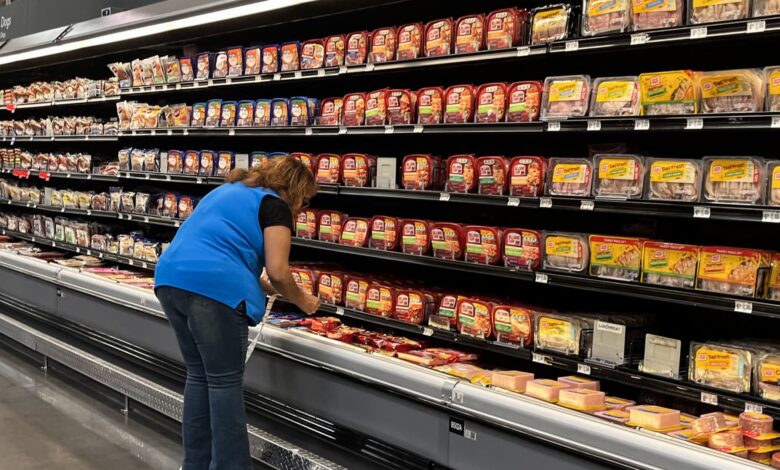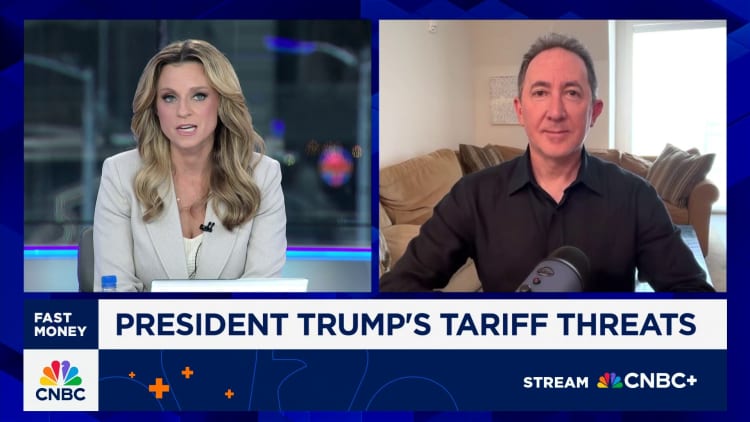Inflation report Tuesday should provide clues on the impact tariffs are having on prices

Groceries are seen at a Walmart supermarket in Houston, Texas, on May 15, 2025.
Ronaldo Schemidt | AFP | Getty Images
June’s inflation report will be looked at not so much for what the headline numbers show than what’s in the underlying data, especially whether tariffs are starting to have an impact.
The consumer price index, due Tuesday at 8:30 a.m. ET, is expected to show an uptick in both headline and core readings, with the latter still well above the Federal Reserve’s target.
But what will really matter is the extent to which President Donald Trump’s tariffs are hitting prices and potentially driving inflation higher.
“June is the first reading [when] these tariffs are really going to start to bite in a very noticeable way,” said Chris Hodge, head U.S. economist at Natixis CIB Americas.
CPI, which measures a broad basket of goods and services across the U.S. economy, is expected to show a 0.3% monthly increase for both headline and core rates, with the latter excluding volatile food and energy costs. On an annual basis, the index is expected to show a 2.7% headline reading and 3% on core.

For the Fed, both numbers will still be north of its 2% target, though central bank policymakers use a separate Commerce Department gauge as their primary forecasting tool.
More importantly, though, the CPI will provide a glimpse into how the Trump duties have worked their way into consumer pockets. When Hodge views the report, he will be looking at two key areas.
“I’m looking at autos and I’m looking at apparel, and last month’s reading was very low for both of them, which is very counterintuitive to what you would have” expected, he said. “These are two sectors that are very sensitive to increased tariffs.”
In fact, the May reading was subdued overall and seemed to indicate little upward pressure from the limited tariffs that went into effect in April. Both headline and core CPI rose just 0.1% on a monthly basis. New (-0.3%) and used (-0.5%) vehicle prices fell while apparel was off 0.4% and energy prices declined 1%.
Those numbers are generally expected to turn around, though Goldman Sachs economists notably think used vehicles still may have seen a decline based on trends at recent auto auctions. Goldman is forecasting a below consensus gain of 0.2% in core CPI for June. Fed officials believe core provides a better guide to long-term inflation trends.
Broadly speaking, economists will be looking to core goods trends as the best barometer for tariff impacts. The category includes items such as apparel and footwear, electronics, housing goods and furniture.
Goldman expects increases in auto insurance and air fares, and a general contribution from tariffs of some 0.08 percentage point to the core reading. Tariff-impacted sectors such as furniture, recreation, education, communication and personal care could see price hits, the firm said.
Economists also will keep an eye on shelter prices, which have been a stubborn component keeping readings higher.
“Our forecast reflects a sharp acceleration in most core goods categories but limited impact on core services inflation, at least in the near term,” Goldman said in a note.
The White House also will be watching the report closely — Trump and other administration officials have been pressuring the Fed to lower interest rates, and a higher than expected inflation reading could cause central bankers to dig in their heels further on policy easing.
“The Fed is going to want to make sure that longer run expectations are not becoming unanchored, and I think that the Fed is going to have to see that peak of tariff-induced inflation before they’re going to be comfortable cutting,” said Hodge, the Natixis economist. “We’re at a time right now where breaking down [the inflation report] into individual components is more useful and more necessary than ever.”




